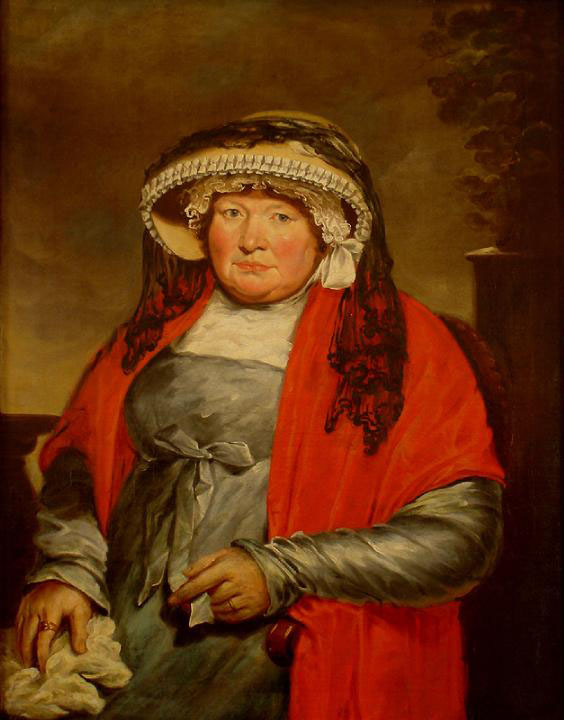Martha Gunn is another of the residents in St Nicolas' churchyard here in Brighton. I wrote about her neighbour Phoebe Hessel a few days ago.
Despite what it says on the headstone, Martha was not a bather; she was a dipper, although both bathers and dippers performed the same functions.
Back in the late 1700s, people didn't disrobe on the beach and run into the sea. They got into bathing huts on wheels which were then pushed into the sea. From there, the men and women were helped out, men by bathers and women by dippers. The bathers and dippers then pushed their clients vigourously through the waves. It took some strength to push those machines across the pebbles and back up the slope from the sea and some sources state that horses were used, others that the bathers and dippers did the work. Either way, it helped to be strong - and to have a good layer of blabber to insulate against the cold of the sea as the dippers would spend many hours in the water.
 |
| Martha Gunn, artist unknown. |
According to the Encyclopedia of Brighton, "By 1790 there were about twenty dippers and bathers at Brighton and they continued in business until about the 1850s. The 'queen' of the Brighton dippers was the famous Martha Gunn. Born in 1726, she was a large, rotund woman and dipped from around 1750 until she was forced to retire through ill health in about 1814. She was a great favourite of the Prince of Wales who granted her free access to his kitchens; an amusing story relates how she was given some butter on one of her visits, but was cornered by the Prince who continued talking to her while edging her nearer the fire until the butter was running out of the poor lady's clothes."
This caricature of Martha by the cartoonist Robert Dighton dates from 1801.
Martha's house at 36 East Street is now an Italian restaurant.



I'm fascinated by headstones and often stop to read them. It's lovely to have a bit of the history behind them. If I'd read this one I would never have realised that it referred to her job.
ReplyDeleteI love these little bits of English history.
ReplyDeleteSarge, You might already see Mike's blog which is full of fascinating snippets; if not, do drop in at http://bitaboutbritain.blogspot.co.uk/
ReplyDeleteVery interesting!
ReplyDeleteIt appears the Prince was a bit mischievous?
ReplyDelete